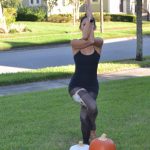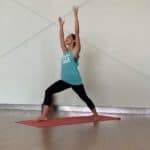Your Monthly Yoga Pose
Urdvha Mukha Svanasana

“It smells like UPDOG!”
“What’s UPDOG?”
Upward facing dog, or urdvha mukha svanasana (updog for short), is a pose commonly seen in vinyasa yoga classes. It is a pose that flows from chaturanga into downward facing dog. Downward facing dog is the sibling pose of urdvha mukha svanasana. Updog is a heart opener; it is a pose for an inhalation and expansion of the lungs.
Many yoga poses are named after animals or sages. Urdvha mukha svanasana is named after a loyal dog who stayed with Yudishthira on his quest to heaven. Although the story is one of loyalty and dharma, or right behavior, it is also quite literal in the look of the pose. Upward facing dog resembles a dog stretching the top of their chest.
In humans, the pose opens the chest and strengthens the back. The legs are activated, and the core tightens to protect the lower back. In the full expression of upward facing dog, the toenails and hands are on the mat. The legs are slightly hovering above, and the spine is long. The hands press into the mat, and the shoulders move down and back, away from the ears. The pose is active, but it is commonly performed inappropriately due to the quick nature of a vinyasa class. The pose is usually held for one breath, and it comes after the strengthening pose of chaturanga (aka yogi push-up).
Common differences seen in upward facing dog are settling into the lower back or sinking into the wrists and allowing the shoulders to come up to the ears. If upward facing dog is too strenuous or causes pain to your body, modify the pose to cobra pose, where the legs are still on the ground.
- With your belly on the ground, place your hands under your shoulders.
- Firmly press your hands into the mat and lift your back, neck and head.
- Imagine as if the bottom tips of the shoulder blades were pulling the collar bones to open the chest.
- Straighten the arms while bringing the naval toward the spine.
- Press the toenails on the mat and “turn your legs on” by activating the leg muscles and slightly rolling the thighs inward.
- If done correctly, you should have the shoulders stacked over the elbows and wrists in one long energetic line.
- Stay for 1-5 breaths.
Be aware of your jaw clenching or your shoulders rising. With consistent practice, the strength for the pose will come. Modify to cobra or low cobra to avoid strain or injury. Furthermore, the pose is named after a dog and should have the same energetic feel. Try to keep the pose calm and refreshing.
Namaste!


